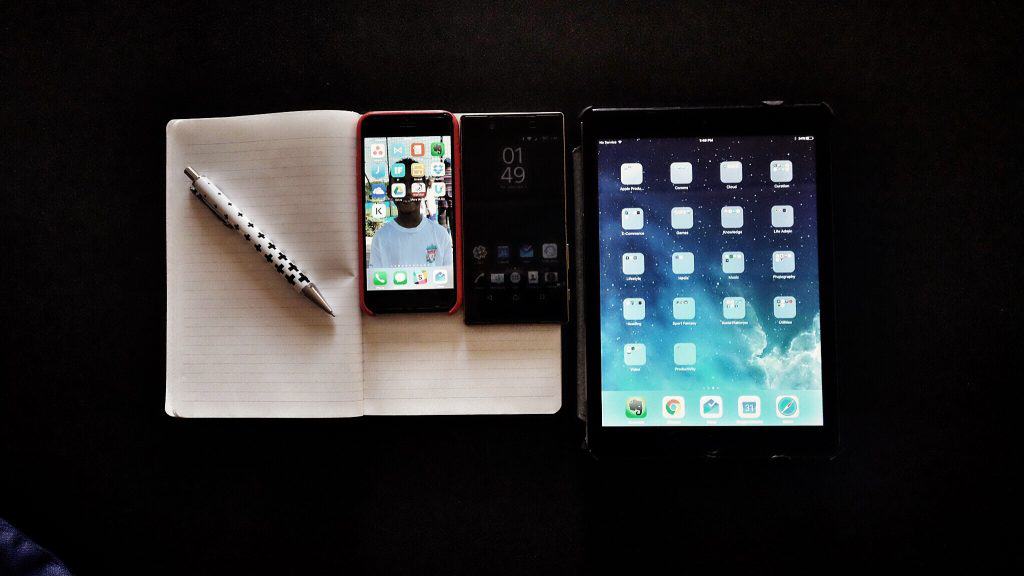By the time my daughter was 2 years old, she knew what YouTube was. She was born into a household with an iPad. My son was her conduit into the world of technology. While I spend quite a bit of time trying to keep with technological developments to ensure that I can both monitor and protect them, my children were born into a world where things like mobile phones, laptops, wi-fi, etc are commonplace.
I often have conversations with them about how we took pictures with cameras that used film or how cellphones only became pervasive when I was in my twenties. They are fascinated by ATMs and how one will pull out a card to swipe to make payment for things. My task is explaining how there needs to be money in a bank account and how the logos on my card, like Visa, are for companies that provide financial services. This is with a five- and a nine-year old.
Many moons ago, a client did research on technology, with a particular focus on banking. They interviewed children, their teachers and their parents to gain understanding of how much the kids knew. My job was to analyse the data and interpret the data. For every question, the teachers and the parents believed the children knew less than they actually did. This was especially the case with parents, which was scary to see, considering, as parents, ours is to protect and guide our children.
Research on Payment
Visa has partnered with Effective Measure to research spending trends in South Africa and across the continent and have broadened this research to children. It has been widely documented how many Africans are ‘mobile first’ which means that we will do more things using our mobile phones, as opposed to desktops and laptops, as the West has. Unsurprisingly, as I have learned from watching my children, they found that children trust technology more, including when it comes to spending.
While I still give my son cash every morning for tuck at school – he’s a growing boy and polishes off his lunch box early in the day – both he and I would prefer a more efficient way. And we are not alone. The children interviewed by VISA had some interesting ideas around spending and payment mechanisms. Take Lucky, who spends his money at school more than anywhere else. He uses his phone to chat to friends on Whatsapp, play games and upload pictures to Instagram and says, “I think I should be able to buy things with it (phone)”.
The kids “believed traditional internet banking would remain the main way in which people paid for goods when it came to using technology.”
I know adults who still aren’t comfortable with the idea of internet banking.
From The Mouth of Babies
Other ideas shared, which are included in a press release that VISA has put out include:
- “My dad has a tablet and he uses it for lots of things. I think companies will make programmes which let him buy more things using his tablet. He will be able to withdraw money and buy groceries using his Apple tablet,” Josh, 11.
- “Fingerprint scanning where banking machines could access information about clients would soon be a reality. Not only will the banks be able to identify who people are through their fingerprints but they will gain access to information about these people such as how much money they have in their bank accounts and the like. Then the ATMs will either accept or reject money withdrawal and payment requests based on these requests.”
- “I think it’s really cool how advanced everything is becoming. We have voice recognition now with computers. And my mom never carries coins and cash. She says you can do everything with your credit card. I think soon you’ll be able to just do it with your body. Maybe we could send out brainwaves to the bank. Like in Xmen, you could think I want R200 and then it will be sent to you with a drone,” Waylon.
- “I think we will have holographic money next year. It won’t be dirty like real money and because it’s a hologram it won’t take up space and trees won’t be chopped down so it’ll be better for the environment and it won’t use lots of electricity. I think it will be a very good idea,” Ilario.
Or, in the wise words of eleven year old Themba, “The world will soon have only one currency and it will be created by one company. Everything will be a lot easier and less complicated. Grown-ups have made things so complicated.”
Visa payWave
Off the back of this, as well as other insights, Visa has developed payWave which it is piloting with McDonalds and Shell.
The thinking behind payWave is how to make purchasing more convenient and less ‘complicated’ by making payment contactless. Visa payWave-enabled cards will have the payWave symbol or logo on them and, to pay, all you’ll need to do is hold the card within 4cm of a reader that has been developed. You hold onto your card and don’t need to sign or enter a pin.
Environmental activist Wendell Berry said, “We can learn about it from exceptional people of our own culture, and from other cultures less destructive than ours. I am speaking of the life of a man who knows that the world is not given by his fathers, but borrowed from his children; who has undertaken to cherish it and do it no damage, not because he is duty-bound, but because he loves the world and loves his children…”
It would help if we listened to our children.


